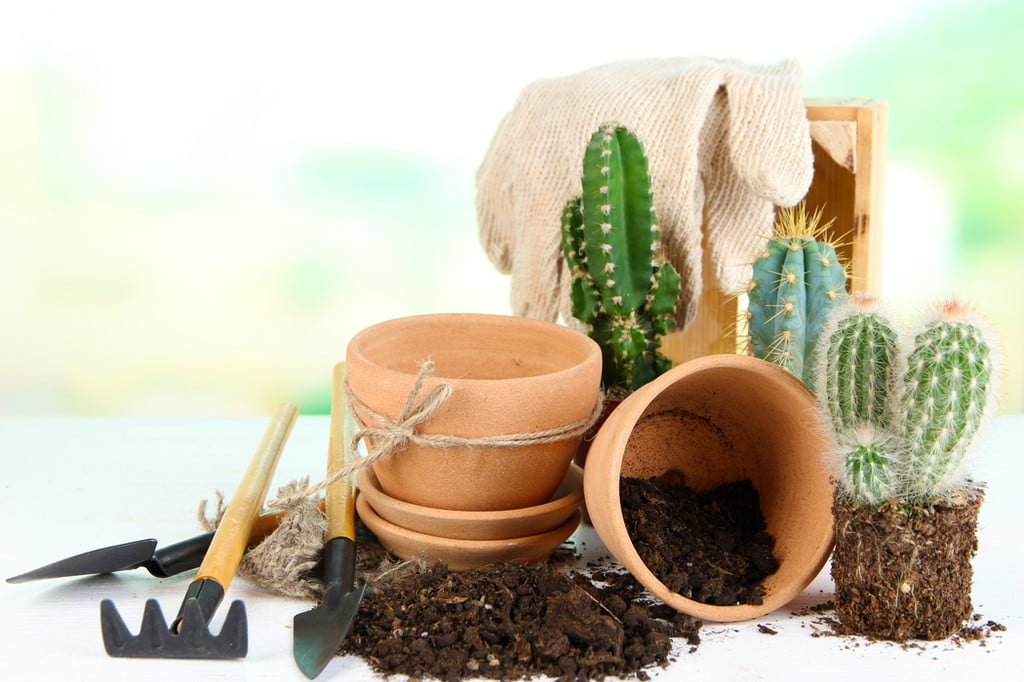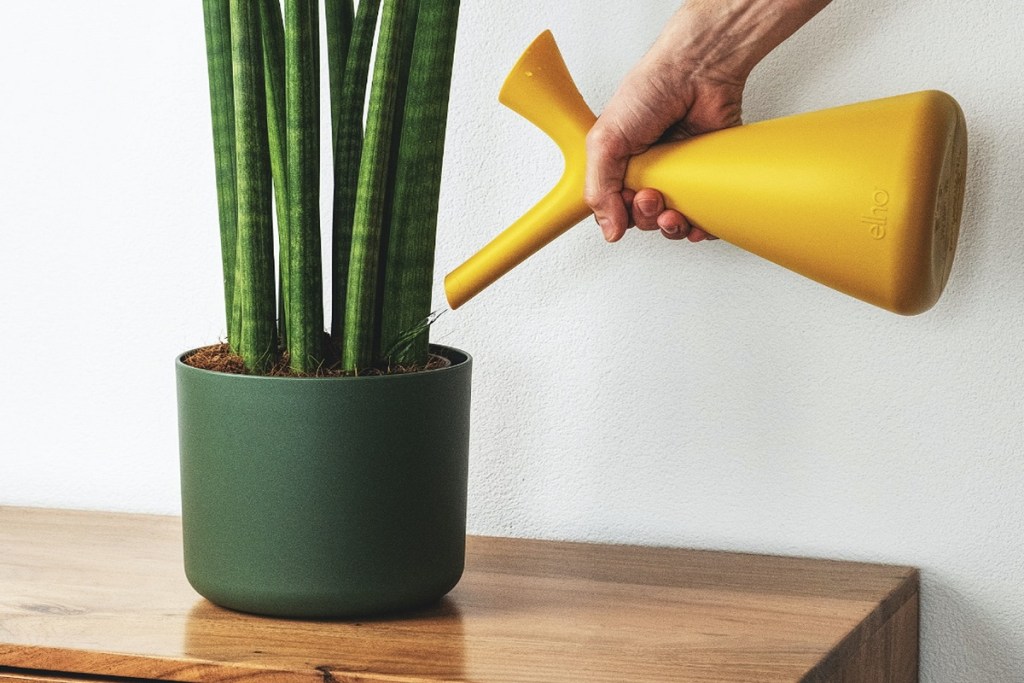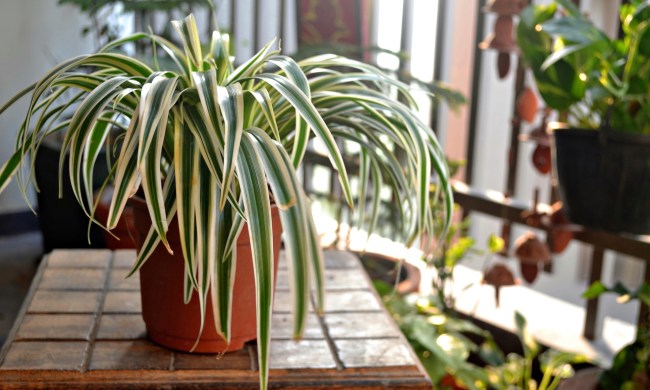The bigger your houseplant collection becomes, the more inevitable it is that you’ll experience crispy leaves and soft stems from time to time. Plant troubles crop up for a variety of reasons, and they don’t necessarily mean that you don’t have a green thumb. Sometimes a plant is simply adjusting to a change in its environment, whether it’s going from the garden center to your home or adapting to warmer weather. So how can you extend the lifespan of your plants? We’ve got a few helpful tips on how to resuscitate nearly dead houseplants below!

Change the soil
Sometimes, a fresh change of soil is what your houseplant needs to come back from the dead. This course of action may be necessary for two reasons: root rot and pests. Caring for your plant too much is a thing, and overwatering can definitely cause it to suffer from root rot when fungal or bacterial infections spread. So how do you diagnose overwatering? Signs of root rot include brown foliage spots, yellow leaves, soft stems, pungent odor, and, of course, wet soil. Some plants that hate overwatering are the pothos and ZZ plant. Shake off as much as the infected soil as you can and place your plant into fresh dirt. With pests, bugs can actually multiply in your growing medium and wreak havoc on your leaves. If you can’t get rid of them by spraying down the leaves and applying neem oil, changing the soil may be your best bet.
Repot your plant
Some plants, such as sansevieria and peace lilies, do well when they’re rootbound since transplanting them can introduce shock. However, many plants, such as monstera, suffer when they don’t have enough space for their roots to grow. When the roots start to wind around each other at the bottom, it’s harder for them to transport nutrients and water to the rest of the plant. This not only stunts growth but also makes your plant more vulnerable to fainting spells. When it comes to moving plants, the rule of thumb is to grab a planter that’s roughly two inches larger in diameter than your previous one. Do your best to loosen the roots at the bottom before sticking your plant into a new pot.

Water your plant
Occasionally, it all boils down to simply watering your plants. If your soil feels bone dry and the plant container is light, chances are that it needs a good soaking. One tell-tale sign of a thirsty plant is droopy leaves — you’ll especially notice this in trailing plants such as pothos and philodendron. Thirsty plants should perk up in about a day. Sometimes, you may need to break up compact soil with a dowel or chopstick to help water travel through your roots! When watering during the growing season, feed your plants with fertilizer to give them nutrients.
Amp up the humidity
Many houseplants are tropical plants that appreciate a healthy dose of humidity. Signs of a plant that needs more humidity include droopy, browning, and crisping foliage. Common houseplants that crave high levels of humidity include nerve plants, ferns, and fiddle-leaf figs. The easiest way to address this issue is with a humidifier. If you don’t have one on hand, leaving your plant in a tray of water on pebbles will help, as will creating an ad hoc cloche with a glass or plastic jar. Misting your leaves will only help temporarily since the water will eventually evaporate into the air — placing a container over your plant after you mist will better retain the moisture in its surrounding environment.

Propagate your plant
When most of your plant looks beyond repair, it’s time to salvage what you can. While you can prune your plant, propagation is the way to go if the roots and foliage are mostly damaged. Take a cutting (or cuttings) of a healthy section of your plant with a clean pair of scissors, dip the ends into rooting hormone, and place your cutting in water or fresh soil. With some luck, your cutting will root in a few weeks.
No matter how diligently you look after your plants, yellow leaves and pest problems are commonplace realities of plant parenthood. If your plant displays any sign of exhaustion, don’t give up on it just yet! Fresh soil, more space, more water, or extra humidity may be what it needs to go from wilted to perky in a day. With care and patience, a healthy and thriving plant can be within your reach.



